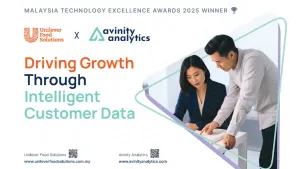AI drives transformation in compliance and risk management
AI adoption enhances productivity but faces knowledge barriers.
Artificial intelligence is revolutionising the fields of compliance and risk management, offering significant advantages for early adopters, including increased efficiency, enhanced quality, and improved prediction accuracy. According to Moody’s, AI's impact is transformative, with nine out of ten early adopters reporting major improvements.
"The first key benefit for the early adopters is efficiency gain," Ralph Man, Senior Director – Product Consulting at Moody’s explained. AI technology automates repetitive manual tasks, such as reviewing documents for regulatory compliance or quality assurance, which are essential yet time-consuming. By streamlining these processes, AI reduces staff workloads, allowing employees to focus on more strategic tasks.
Man said that by leveraging historical data, AI enhances the accuracy of predictions and highlights areas that require attention. Furthermore, AI's ability to incorporate additional data sources into daily operations allows for processing information that would be too time-consuming or nearly impossible for humans to handle. "This strength of the AI could definitely help with the quality," Man added.
Despite these advantages, there are significant barriers to adopting AI in risk and compliance. "One of the key challenges we saw is lack of AI knowledge and expertise," Man noted. The rapid pace of AI technology development requires substantial effort to keep up. "Some companies do choose to train up their own team... but it takes huge investment and takes a lot of time," he explained. Alternatively, partnering or outsourcing can bridge the gap more quickly, with off-the-shelf solutions available to accelerate implementation.
Data quality poses another significant challenge. Organisations often face fragmented and inconsistent data, making it difficult to identify reliable sources of truth. While leveraging internal data is a start, incorporating external data sources is often necessary to fill gaps.
Looking ahead, stakeholders must prepare for future trends in AI and risk compliance. Man highlighted the need to embrace robust AI applications capable of identifying risks and patterns, such as those used in anti-money laundering and fraud detection. These applications increasingly rely on cloud infrastructure, necessitating the integration of in-house applications and processes.
Additionally, stakeholders must be aware of evolving compliance requirements. Regulators are imposing more advanced requirements on AI governance, emphasising transparency and explainability. "There have been more and more regulators with advanced requirements on AI governance, guardrails and guidance," Man warned. As AI continues to evolve, stakeholders must stay informed and adapt to meet these regulatory demands.



















 Advertise
Advertise







Commentary
Fees friction is testing Asia’s academic ambitions